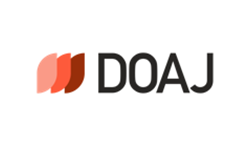СОЦІАЛЬНО-ЕКОНОМІЧНА ДИВЕРГЕНЦІЯ УКРАЇНИ ТА ЄС: НОВІ ВИКЛИКИ
Ключові слова:
Соціально-економічна дивергенція, лімітаційні фактори економічного зростання, пастка дивергентності, Україна, ЄС.Анотація
Охарактеризовано поточну динаміку соціально-економічного розвитку України в процесі її європейської інтеграції в рамках укладеної у 2014 р. Угоди про асоціацію з Європейським Союзом. Надано порівняльну оцінку розвитку України та окремих країн ЄС за критеріями ВВП на душу населення. Виявлено посилення тенденції дивергенції соціально-економічних систем Євросоюзу та України, описано інституційне явище пастки дивергентності, що виникає внаслідок синтезу пасток бідності та неконвергентності. Охарактеризовано ризики потрапляння України в дивергенційну пастку, пов’язані з впливом таких основних внутрішніх факторів, як: ухвалення в 2015 р. Україною умов реструктуризації частини державного боргу, які суттєво обмежують її економічне зростання; неприпустимо низький рівень капіталізації національної економіки в контексті конвергенції; галопуюча міграція робочої сили з України, що призводить до значних втрат потенціалу внутрішнього зростання ВВП; мізерне значення інноваційно-технологічного фактору в макроекономічному розвитку держави.
Класифікація за JEL: F63, O43, O47, P27, P52.
Посилання
Andor, L. (2014, October 7). Countering divergence within the Economic and Monetary Union [Lecture notes]. European Commission Press Corner.
Bagnoli, Ph. (2016). Structural feedback mechanisms supporting convergence: Some observations [Power Point Slides]. OECD Workshop «Global Convergence Scenarios: Structural and Policy Issues». OECD.
Bughin, J., Mischke, J., Tacke, T., Hazan, E., & Sjatil, P. E. (2018). Testing the resilience of Europe's inclusive growth model. McKinsey Global Institute.
Burlay, T. (2018). Eurointegration of Direction and the Divergence Trap of Ukraine. In M. Bezpartochnyi (Ed.), Transformational processes the development of economic systems in conditions of globalization: Scientific bases, mechanisms, prospects (Vol. 2, pp. 283-295). ISMA University.
Demertzis, M., Sapir, A., & Wolff, G. B. (2019). Promoting sustainable and inclusive growth and convergence in the European Union (No. 2019/7). Bruegel Policy Contribution. Eurofound. (2018, December 7). EU convergence monitoring hub. https://www.eurofound.europa.eu/data/convergence-hub
European Commission. (2017). White paper on the future of Europe: Reflections and scenarios for the EU27 by 2025. European Comission. European Commission. (2019). Eurostat [Database]. https://ec.europa.eu/ eurostat/data/
Galbraith, J. K. (1967). The New Industrial State. Houghton Mifflin Company.
Gill, I. S., & Raiser, M. (2012). Golden growth: Restoring the lustre of the European economic model. World Bank Publications. https://doi.org/10.1596/978-0-8213-8965-2
Gligorov, V., Grieveson, R., Havlik, P., Podkaminer, L., Astrov, V., Dobrinsky, R.,
Hanzl-Weiß, D., Hunya, G., Leitner, S., Mara, I., Pidnyuk, O., Richter, S., &
Vidovic, H. (2017). CESEE Back on Track to Convergence (No. Autumn2017). The Vienna Institute for International Economic Studies, wiiw.
Heyets, V. (2019). Social quality in a transitive society: The role of the state. International Journal of Social Quality, 9(1), 32-50. https://doi.org/10.3167/IJSQ.2019.090103
Inkeles, A. (1999). One world emerging? Convergence and divergence in industrial societies. Westview Press. International Monetary Fund. (2019). World economic outlook database (April 2019) [Data set]. https://www.imf.org/en/Publications/WEO/weodatabase/2019/April https://doi.org/10.4324/9780429300677
Iskenderov, P. (2020, March 24). The virus has ruined the European Union [in Russian]. The International Affairs. https://interaffairs.ru/news/show/25748
Juncker, J. C., Tusk, D., Dijsselbloem, J., Draghi, M., & Schulz, M. (2015). Completing Europe's economic and monetary union. European Commission.
Kooths, S. (2020, March 19). Economic outlook update: German GDP expected to slump between 4.5 and 9 percent in 2020. Kiel Institute for the World Economy (IfW). https://www.ifw-kiel.de/publications/media-information/2020/economic-outlook-update-german-gdp-expected-to-slump-between45-and-9-percent-in-2020/
Libman, A. M. (2006). The role of economic integration and disintegration in the post-soviet region: Quantitative analysis. Forecasting problems, 5, 58-72. https://doi.org/10.1134/S1075700706050066
Palier, B., Rovny, A.E., & Rovny, J. (2018). European disunion? Social and economic divergence in Europe, and their political consequences. Іn Ph. https://doi.org/10.1093/oso/9780198807971.003.0011
Manow, B. Palier, H. Schwander (Eds.), Welfare democracies and party politics: Explaining electoral dynamics in times of changing welfare capitalism (pp, 281-297). Oxford University Press.
Parsons, T. (1971). The system of modern societies. Englewood Cliffs: PrenticeHall.
Pelipas, I. (2017). Real, nominal and institutional convergence in the EAEU countries. Research Center of the Institute of Privatization and Management.
Pritchett, L. (1997). Divergence, big time. Journal of Economic Perspectives, 11, 3-17. https://doi.org/10.1257/jep.11.3.3
Quah, D. T. (1997). Empirics for growth and distribution: stratification, polarization, and convergence clubs. Journal of Economic Growth, 2, 27-59. https://doi.org/10.1023/A:1009781613339
Ridao-Cano, C., & Bodewig, C. (2018). Growing united: Upgrading Europe's convergence machine. World Bank. https://doi.org/10.1596/29448
Romashenko, S. (2020, March 26). Italy blocked EU summit decisions [in Russian]. DW-Ukraine. https://p.dw.com/p/3a6HZ
Sala-i-Martin, X. (1994). Cross-sectional regressions and the empirics of economic growth. European Economic Review, 38(3-4), 739-747. https://doi.org/10.1016/0014-2921(94)90109-0
Solow, R. M. (1956). A contribution to the theory of economic growth. Quarterly Journal of Economics, 70, 65-94. https://doi.org/10.2307/1884513
Sorokin, P. A. (1964). The basic trends of our times. Rowman & Littlefield.
Spence, M. (2011). The next convergence: The future of economic growth in a multispeed world. Farrar, Straus and Giroux.
Swan, T. W. (1956). Economic growth and capital accumulation. Economic Record, 32, 334-361. Temple, J. (2006). Convergence scenarios: An overview [Power Point Slides]. https://doi.org/10.1111/j.1475-4932.1956.tb00434.x
OECD Workshop «Global Convergence Scenarios: Structural and Policy Issues». OECD.
The Brussels Times. (2020, March 15). Coronavirus: EU likely to enter a recession. The Brussels Times. https://www.brusselstimes.com/economics/100341/coronavirus-eu-likely-to-enter-recession/
Tinbergen, J. (1961). Do communist and free economies show a convergence pattern? Soviet Studies, 12(4), 333-341. https://doi.org/10.1080/09668136108410255
##submission.downloads##
Опубліковано
Як цитувати
Номер
Розділ
Ліцензія
Автори, які публікуються у цьому журналі, погоджуються з наступними умовами:
- Автори залишають за собою право на авторство своєї роботи та передають журналу право першої публікації цієї роботи на умовах ліцензії Creative Commons Attribution License, котра дозволяє іншим особам вільно розповсюджувати опубліковану роботу з обов'язковим посиланням на авторів оригінальної роботи та першу публікацію роботи у цьому журналі.
- Автори мають право укладати самостійні додаткові угоди щодо неексклюзивного розповсюдження роботи у тому вигляді, в якому вона була опублікована цим журналом (наприклад, розміщувати роботу в електронному сховищі установи або публікувати у складі монографії), за умови збереження посилання на першу публікацію роботи у цьому журналі.
- Політика журналу дозволяє і заохочує розміщення авторами в мережі Інтернет (наприклад, у сховищах установ або на особистих веб-сайтах) рукопису роботи, як до подання цього рукопису до редакції, так і під час його редакційного опрацювання, оскільки це сприяє виникненню продуктивної наукової дискусії та позитивно позначається на оперативності та динаміці цитування опублікованої роботи (див. The Effect of Open Access).








